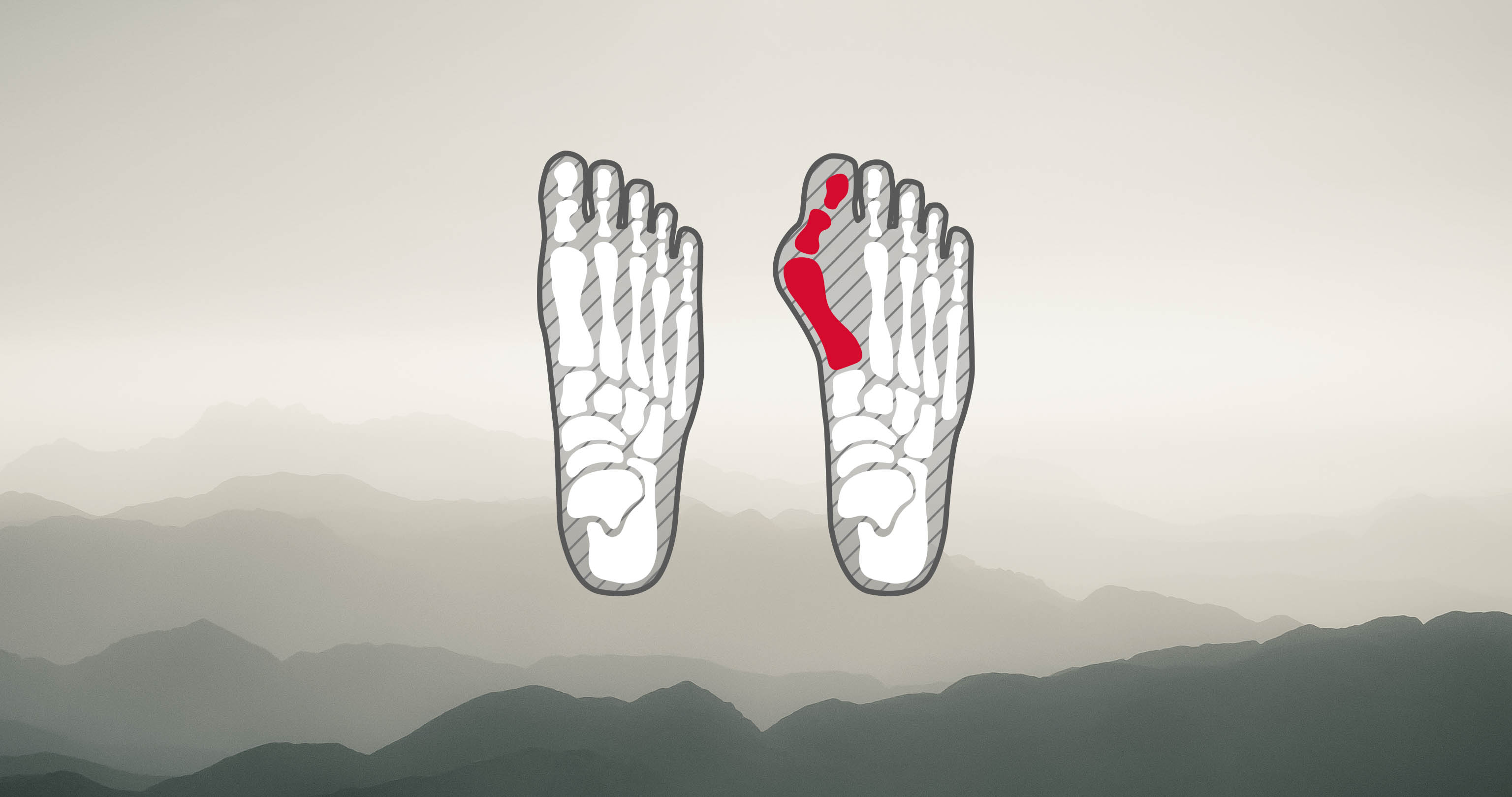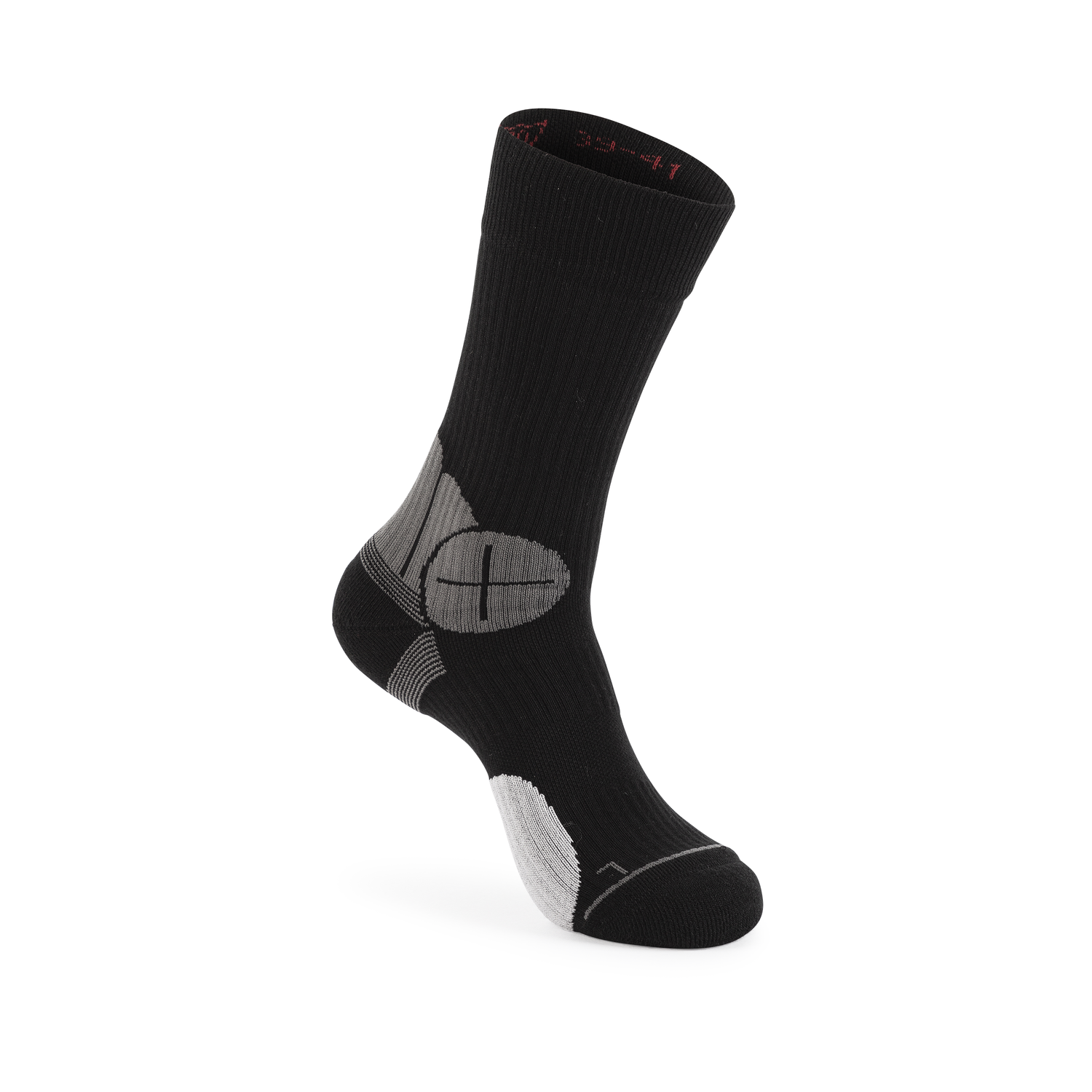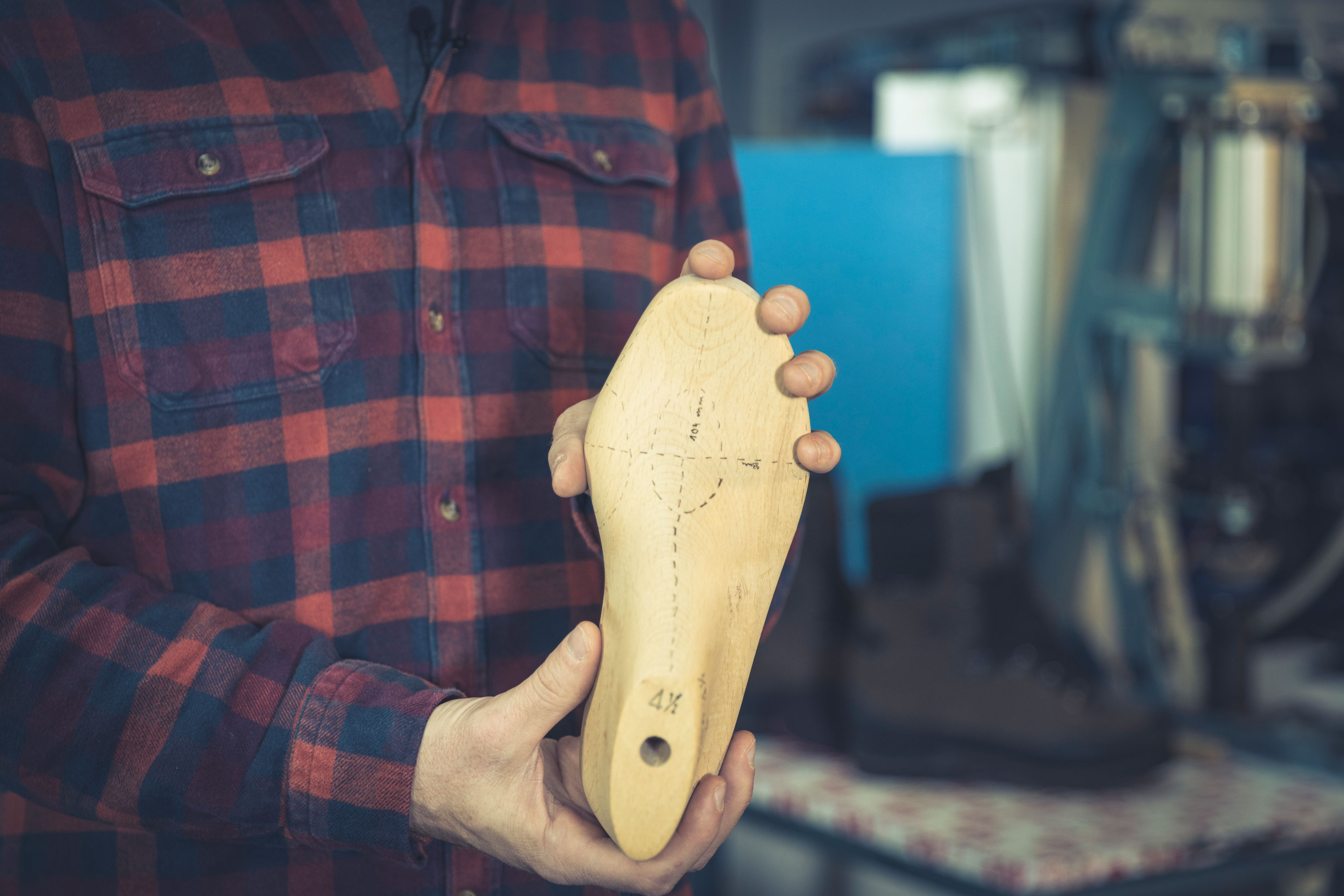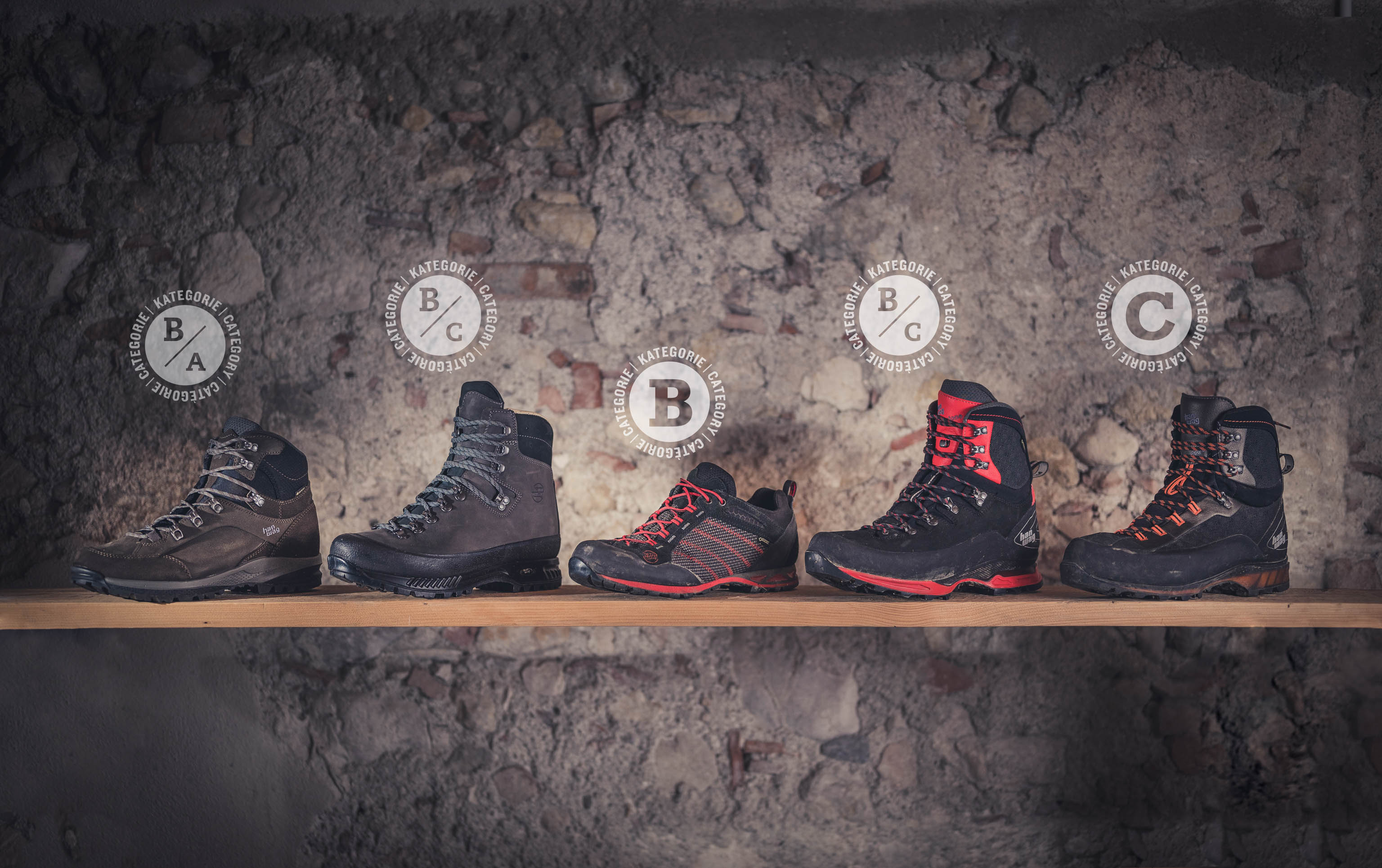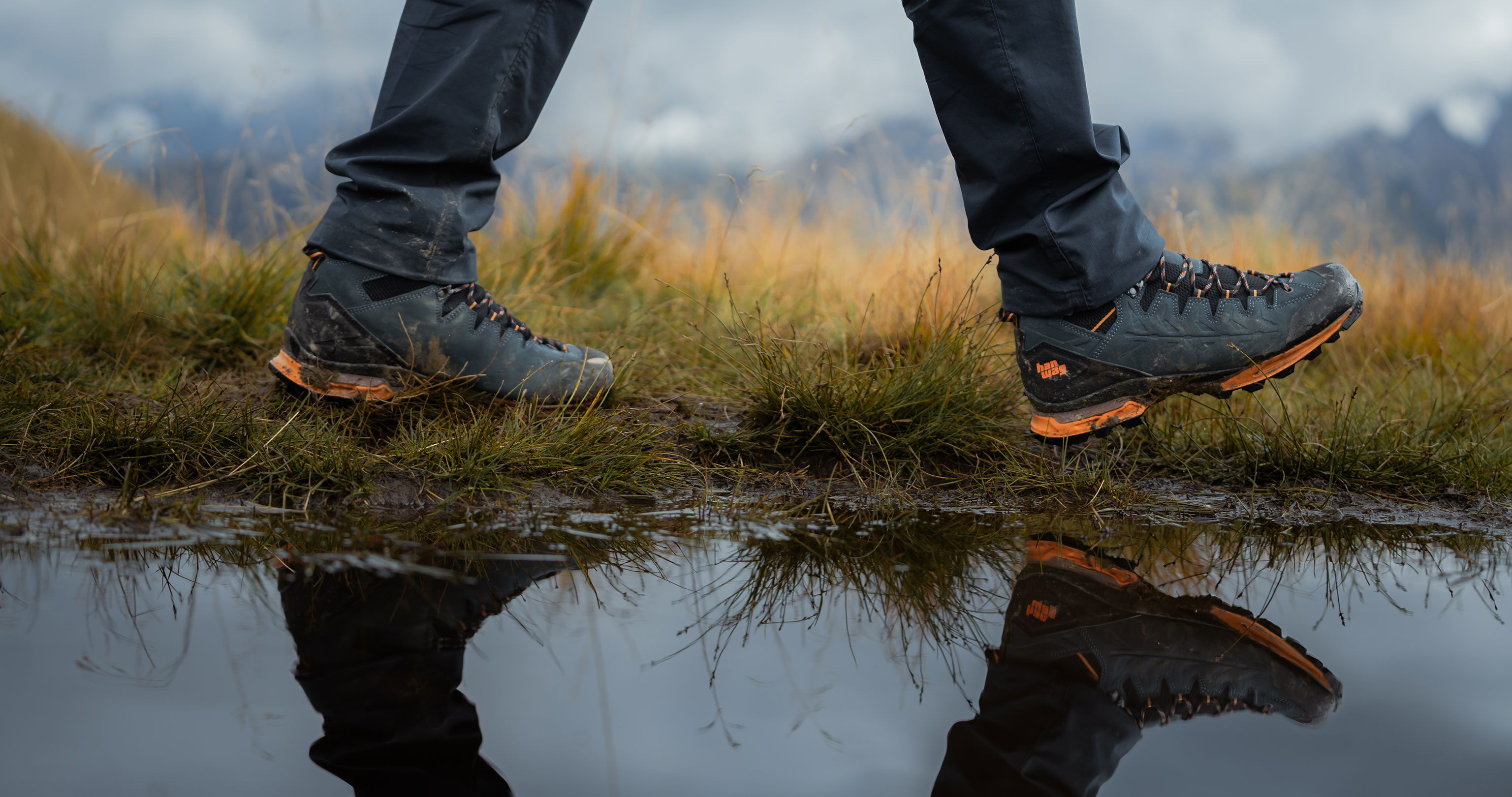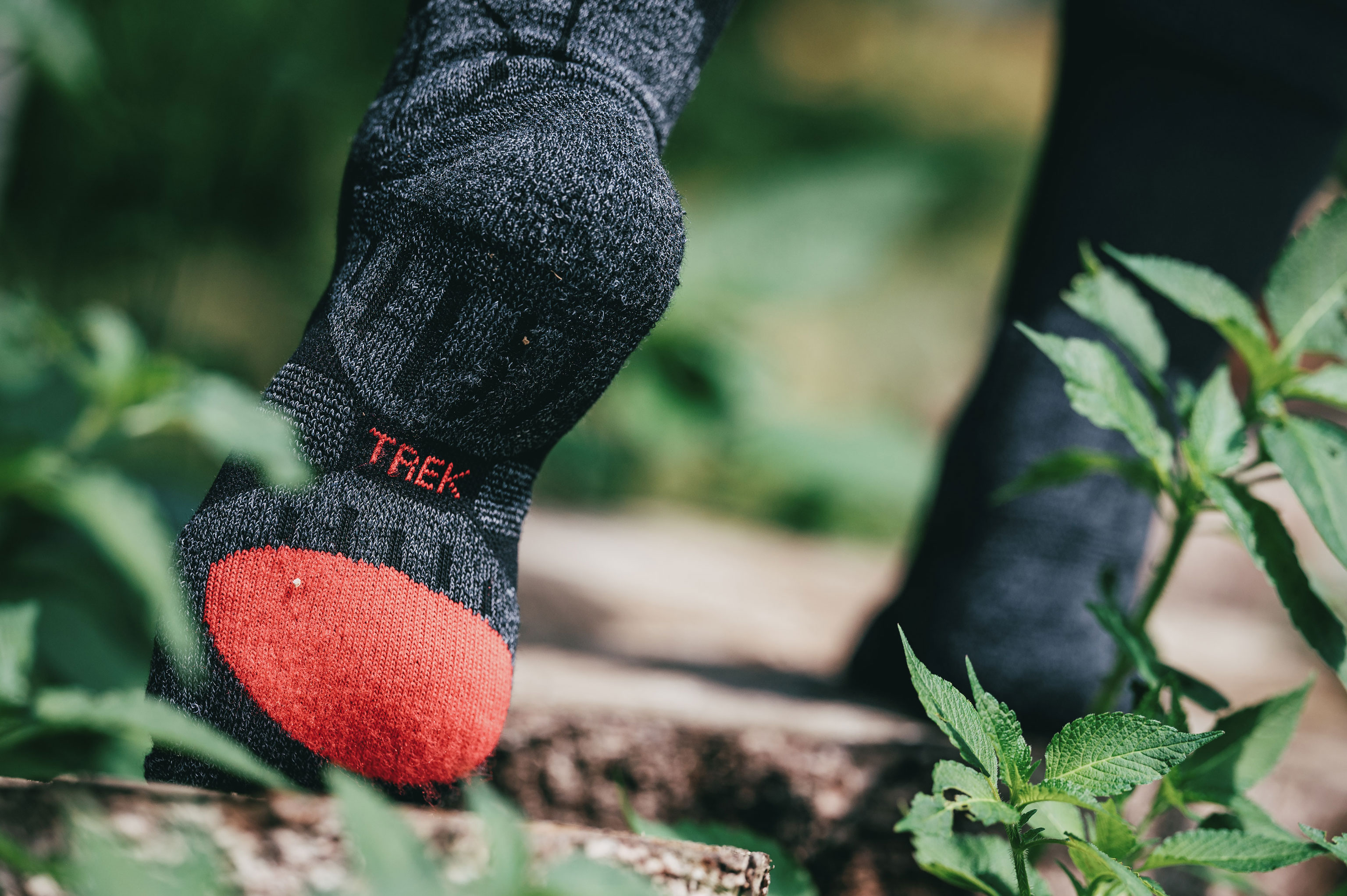Updated on
-
Sneak Peak – The 5 Key Tips
- Bunions are bony lumps that form on the side of the feet at the base of your big toe. Hallux valgus is the medical name for them.This ganglion at the ball of the big toe joint can cause painful pressure points.
- Special bunion hiking boots have more room in this area. The Bunion Last reduces pressure and improves the fit.
- HANWAG boots and shoes for users with bunions also have a higher toe box.
- In addition, our Bunion models have no stitching at the sensitive big toe joint to prevent pressure or rubbing.
- There are also special hiking socks for people with bunions. They have special padding.
For more in-depth information, read the whole article.
- Hallux valgus – What is it exactly?
- What are the best hiking boots for bunions?
- Finding the right hiking boot for your bunions
The human foot is a complex structure. Just think what your feet have to do day in, day out. They perform an extraordinary function – supporting up to three times our body weight as we move. The arch, ligaments and muscles all work together to cushion and absorb the load. However, should any of the bones become misaligned, this can quickly lead to serious problems and painful discomfort. Especially if you are hiking, trekking or mountaineering for long periods.
Diagnosis: hallux valgus (aka bunions). This is the medical term for a misalignment of the big toe, which can often make walking or hiking painful. However, there is good news! People with bunions can hike and spend time in the mountains in full comfort – if they have the right hallux valgus footwear.
Find our more here about the best hiking boots and walking shoes for hallux valgus and what else to bear in mind. Get expert advice from the pros, but first up, a brief medical introduction.
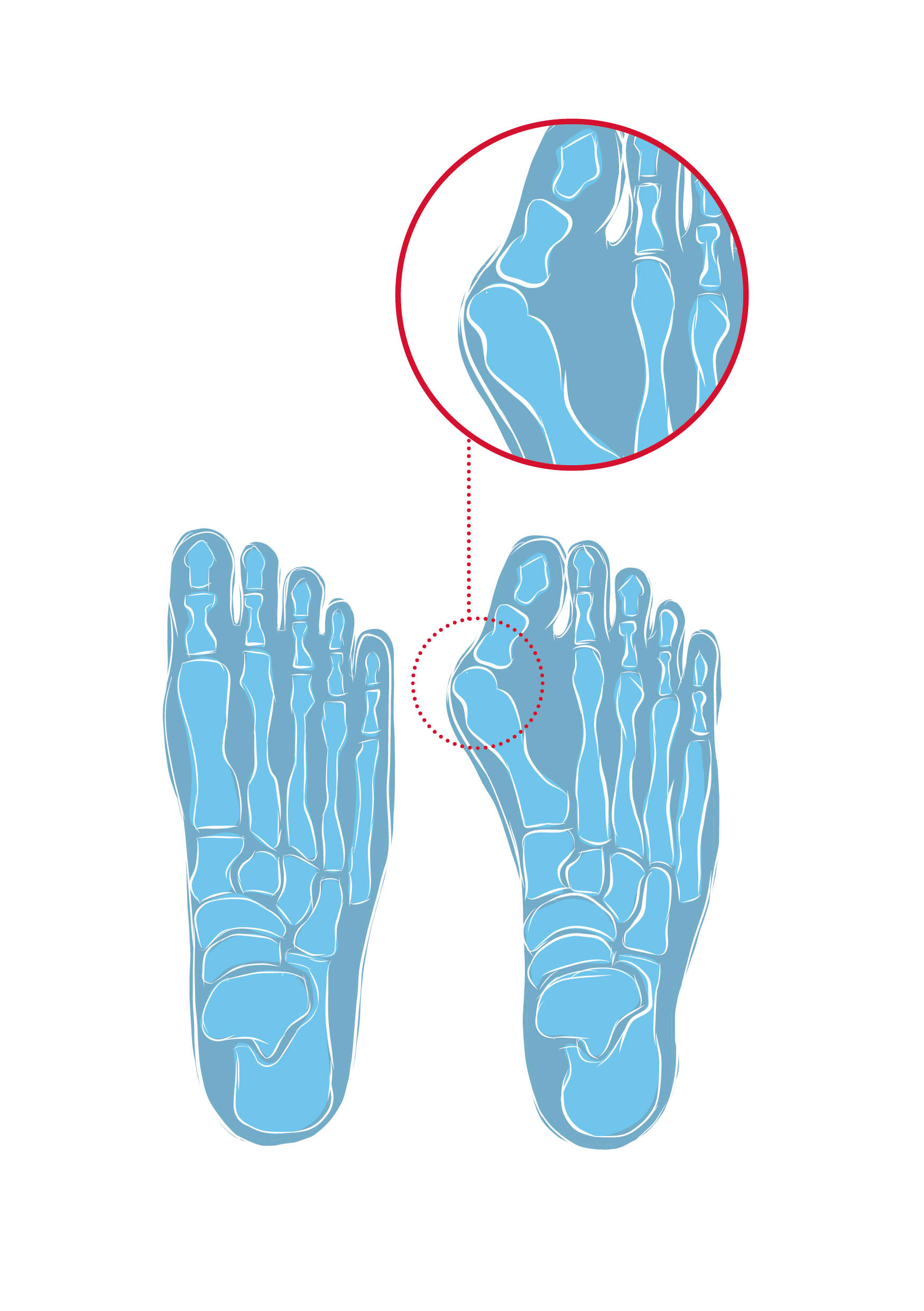
1 Hallux valgus – What is it exactly?
Many people suffer from bony lumps on the side of their feet or their big toe pointing inwards – bunions (hallux valgus) are one of the most common foot problems. According to research, some 23 per cent of all adults suffer from bunions – older people and women are disproportionately affected.
Are bunions hereditary or do they develop over the years? Good question. It would seem that both internal and external factors have a role to play when it comes to hallux valgus. This means some people have a genetic disposition. The extent to which this develops has a lot to do with lifestyle.
There are a number of factors that can cause bunions, these include:
- Wearing high heels
- Wearing very narrow shoes, such as climbing shoes
- Weak connective tissue in the feet
- Being overweight
However, the main cause of bunions is having flat feet, also known as ‘fallen arches’. Flat feet are caused by stretching of the tissues in your feet. The foot musculature grows weaker at the first metatarsal bone. As a result, the big toe points inwards to the other toes. And the base or ball of the big toe joint forms a ganglion. These can often have painful consequences. Depending on how serious the bunion is, you might suffer with pressure points, inflammation, hammer toes, and/or premature degeneration of joint cartilage.
That’s enough medical talk though. Let’s have a look at the solution for a lifetime of happy hiking, despite bunions.
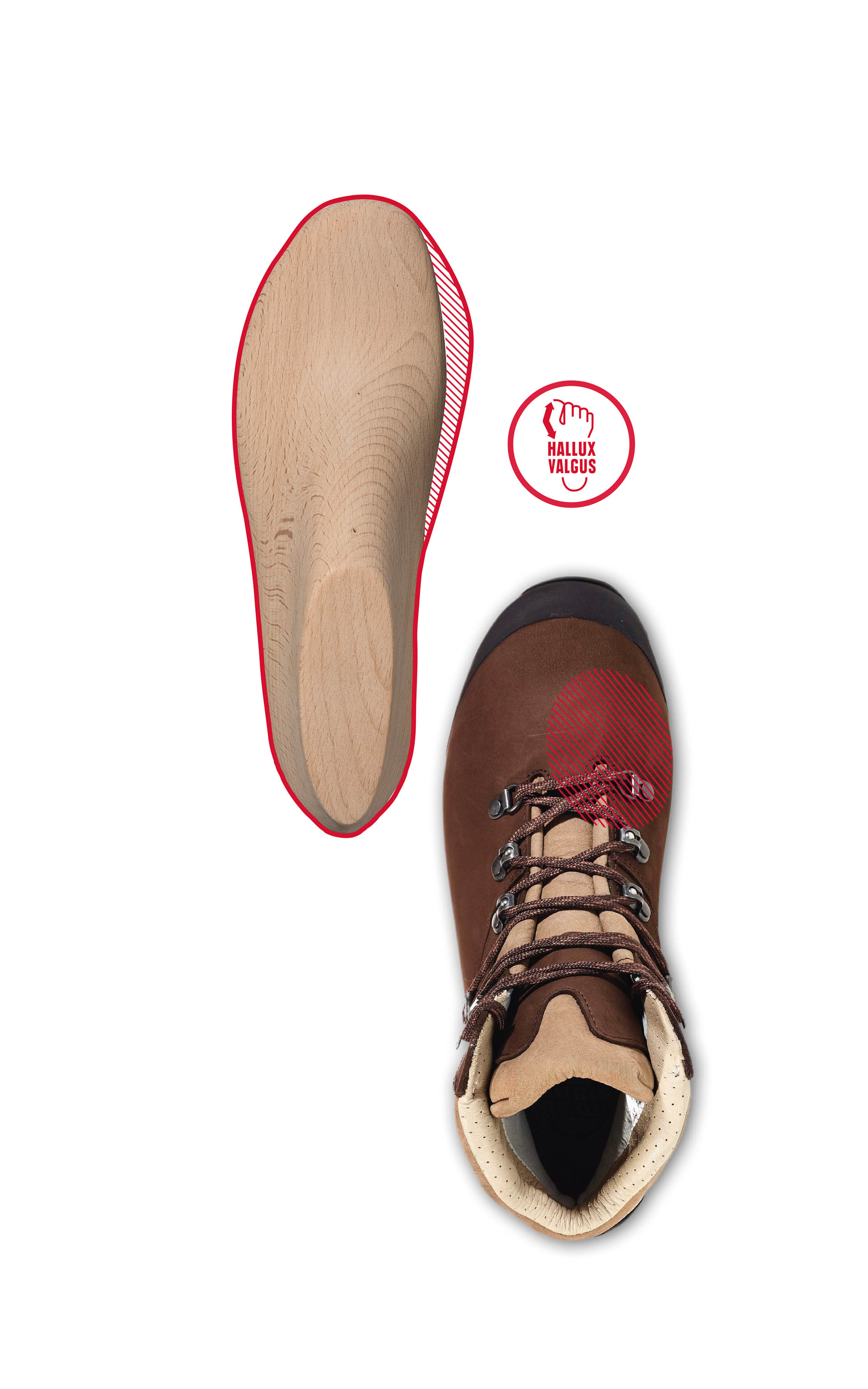
2 What are the best hiking boots for bunions?
If your big toe points inwards because of bunions, there is one thing you need in particular – more space for the front of your foot. This is perfectly possible. After all, we make our boots over differently shaped lasts. The last is a model rather like an artificial foot. It’s made from a meticulously designed piece of either wood or plastic and the footwear is fashioned around it.
At HANWAG, we have several special lasts – for people with differently shaped feet. This also includes a ‘Wide Last’ for people with wider feet. However, using a wider last still does not provide enough room for a hallux valgus.
What’s more, wider lasts are wider over the whole of the forefoot on both sides. People with bunions generally only need more room at a specific point – at the side of their big toe – and then a normal fit for the rest of the foot to ensure that their shoes still hold their feet firmly.
Watch the video: The HANWAG Bunion last
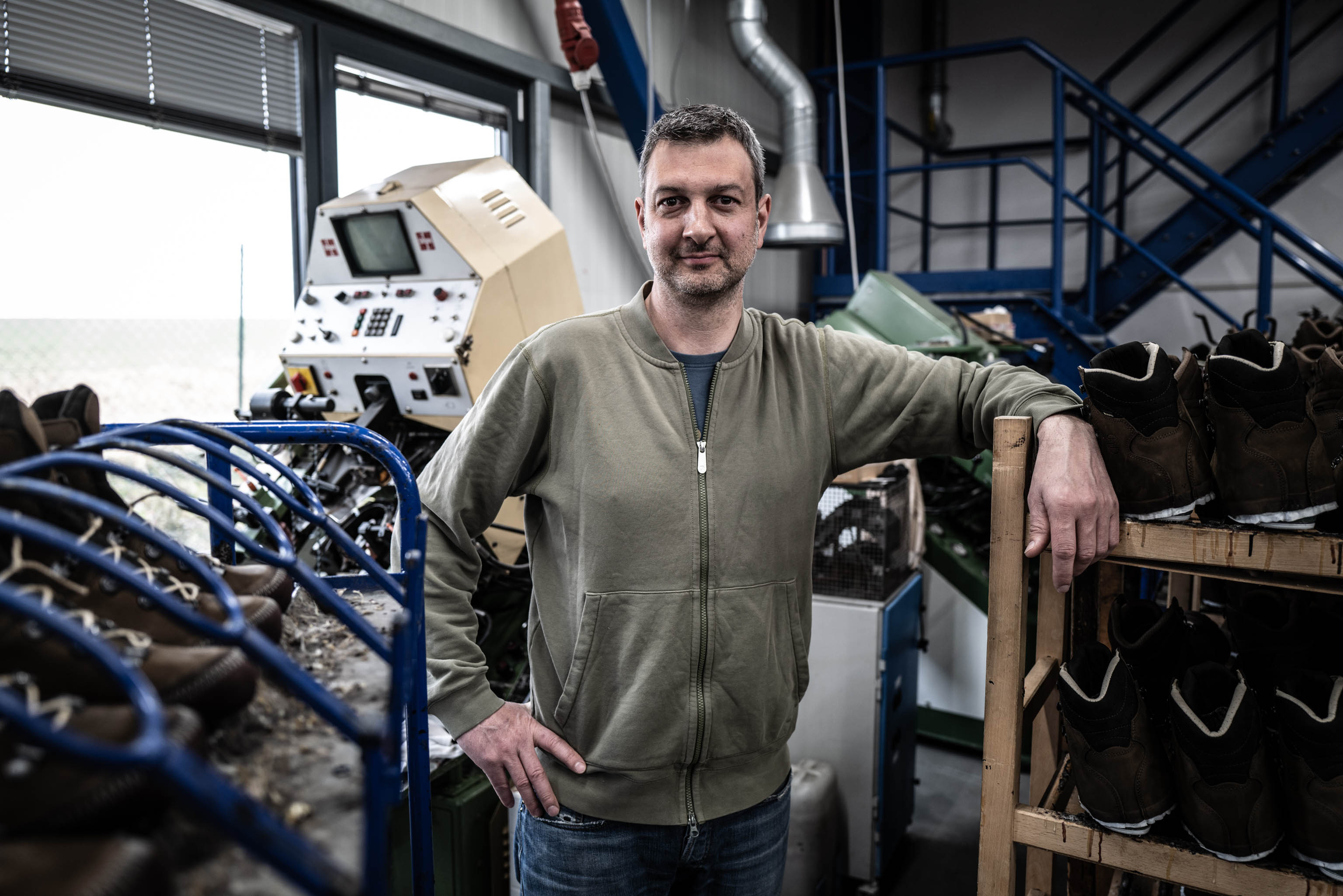
"Simply wearing wider shoes, is not the best solution for hallux valgus."
Andreas Settele, Head of Research and Development HANWAG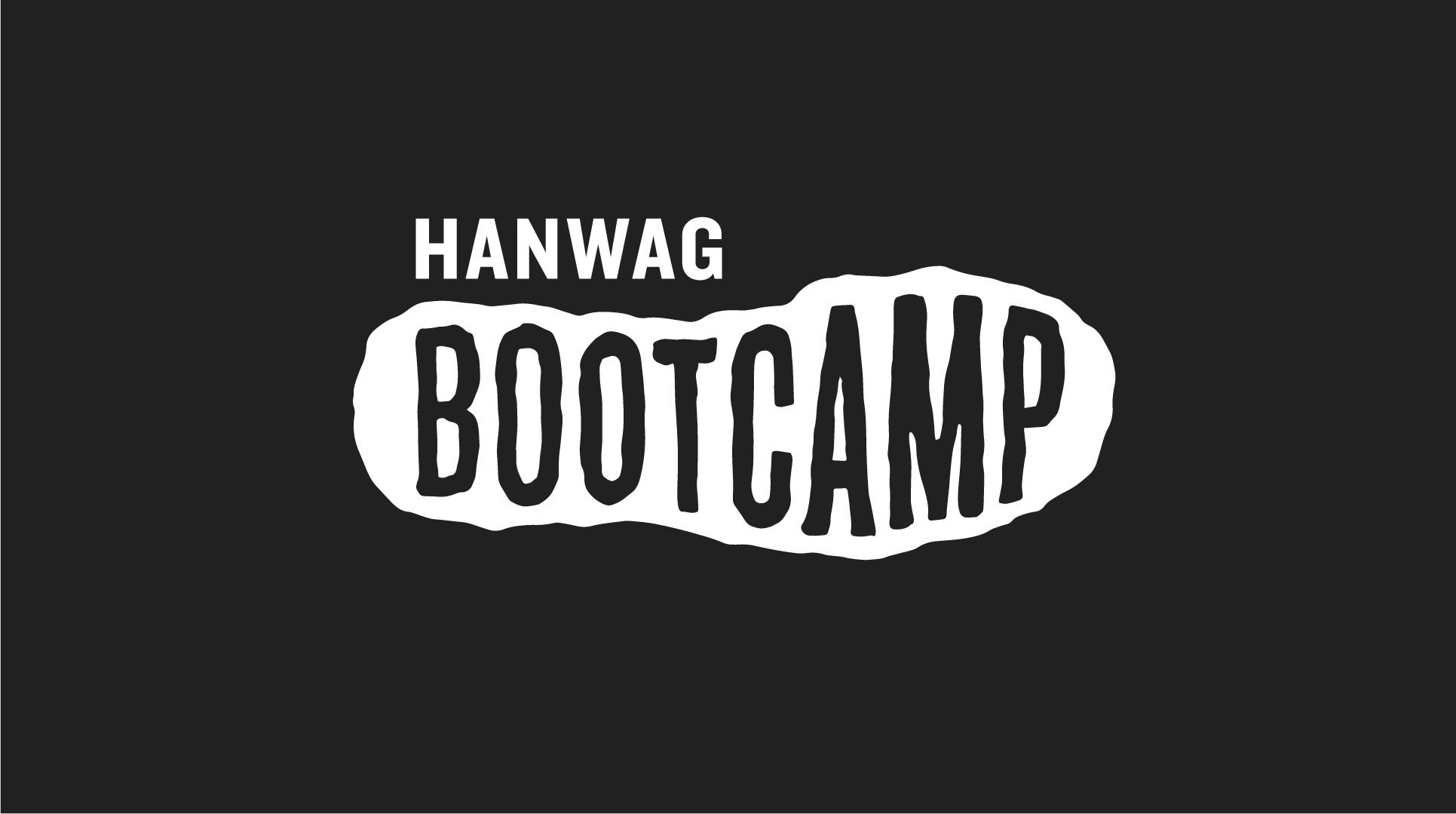
Expertise and know-how for your outdoor adventures – welcome to the HANWAG BOOTCAMP. Watch the how-to videos on our YouTube channel.
Most people with bunions need more than hiking boots with a wider last. This is why HANWAG has developed a special hallux valgus hiking boot last, our Bunion Last. Our Bunion Last models are designed to provide more room for the feet, but only at the point where you need it, at the base joint of the big toe.
This prevents uncomfortable pressure points experienced by hikers with bunions. With bunions, the big toe often is forced inwards. This often affects the other toes. So, we designed a higher toe box for our Bunion hiking boots, to give all the toes more space. In addition, on the inner side at the ball of the foot, we use no stitching at the sensitive big toe joint to prevent pressure or rubbing.
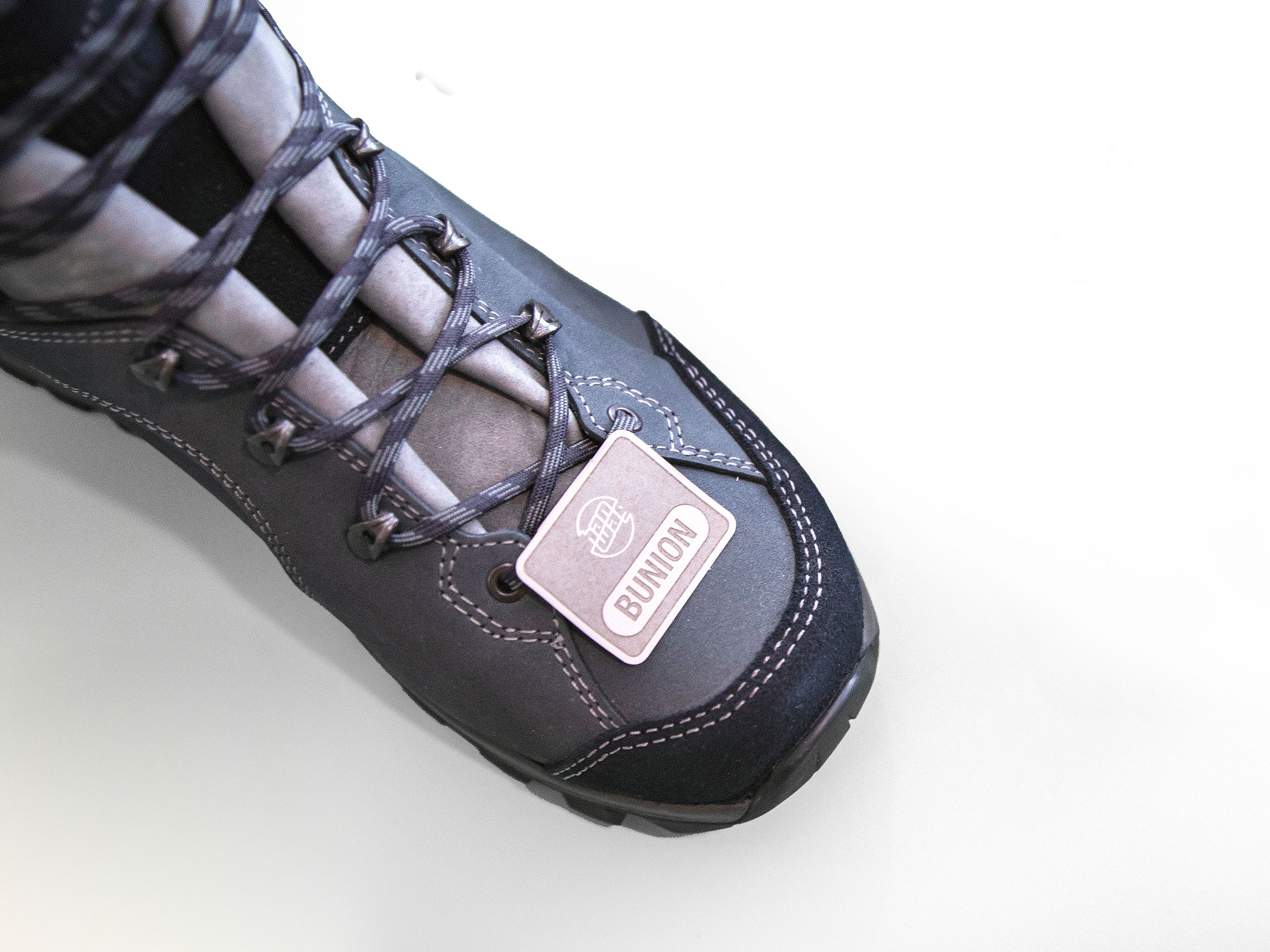
HANWAG BUNION hiking boots
HANWAG offers several models with a special Bunion Last for people with hallux valgus. Check out our webshop for Bunion hiking shoes for women and Bunion hiking shoes for men.
Always stay up to date: Subscribe to the HANWAG newsletter and become part of our community.
3 Finding the right hiking boot for your bunions
From lightweight hiking shoes to long-distance trekking boots, there is a wide range of models available for hikers with hallux valgus. To choose the right model, consider:
- What you want them for
- What your feet are like
- How heavy your pack is
- What material you prefer
- Do your boots need to be 100% waterproof?
For easier orientation to help you choose the right new boots or shoes, we use standard footwear categories.
If you have bunions, it’s more important that you take your time and try on new footwear carefully. This is something you can do at your local HANWAG retailer.
One last tip from our Head of R&D Andreas Settele: “In addition to getting the right boots, special hiking socks for bunion relief can help too.”
So, no matter what kind of feet you have, we wish you happy hiking.

